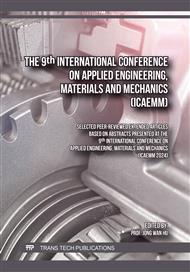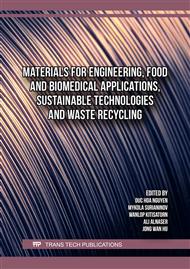p.43
p.49
p.61
p.71
p.79
p.87
p.95
p.107
p.121
Investigating the Effect of Utilizing a Sustainable Stabilizer as a Partial Replacement of Cement on Soil Compressibility and Permeability
Abstract:
Desert soils present some issues that need improvement. Some of these are high permeability and collapsibility potential. These problems are due to the uniform particle size distribution and the lack of particle edges. Soil improvement is required to mitigate these issues. Cement is widely used for soil stabilization but has environmental issues since it is a significant source of CO2 emissions and requires high energy consumption. In this study, the calcined shale material is utilized as a partial replacement for cement to reduce the permeability and compressibility of soils more sustainably. The study considers three cement doses of 5%, 10%, and 15% and four calcined shale percentages of 10, 30, 50, and 70%. A series of falling head permeability and one-dimensional consolidation tests were conducted to examine the performance of cement and calcined shale as stabilizers. The results of the study indicate that the addition of 30% calcined shale as a partial replacement of cement has the most significant effect on the conductivity and compressibility of the soils. An increase in cement content decreases the permeability and compressibility of the soil due to the hydration of cement. Conversely, the conductivity and consolidation of the soil are initially decreased with an increase in the calcined shale up to 30% and then start to increase. In summary, this study reveals that the presence of CS and cement has a substantial effect on the conductivity and compressibility of the soils.
Info:
Periodical:
Pages:
79-85
Citation:
Online since:
December 2024
Keywords:
Price:
Сopyright:
© 2024 Trans Tech Publications Ltd. All Rights Reserved
Share:
Citation:



